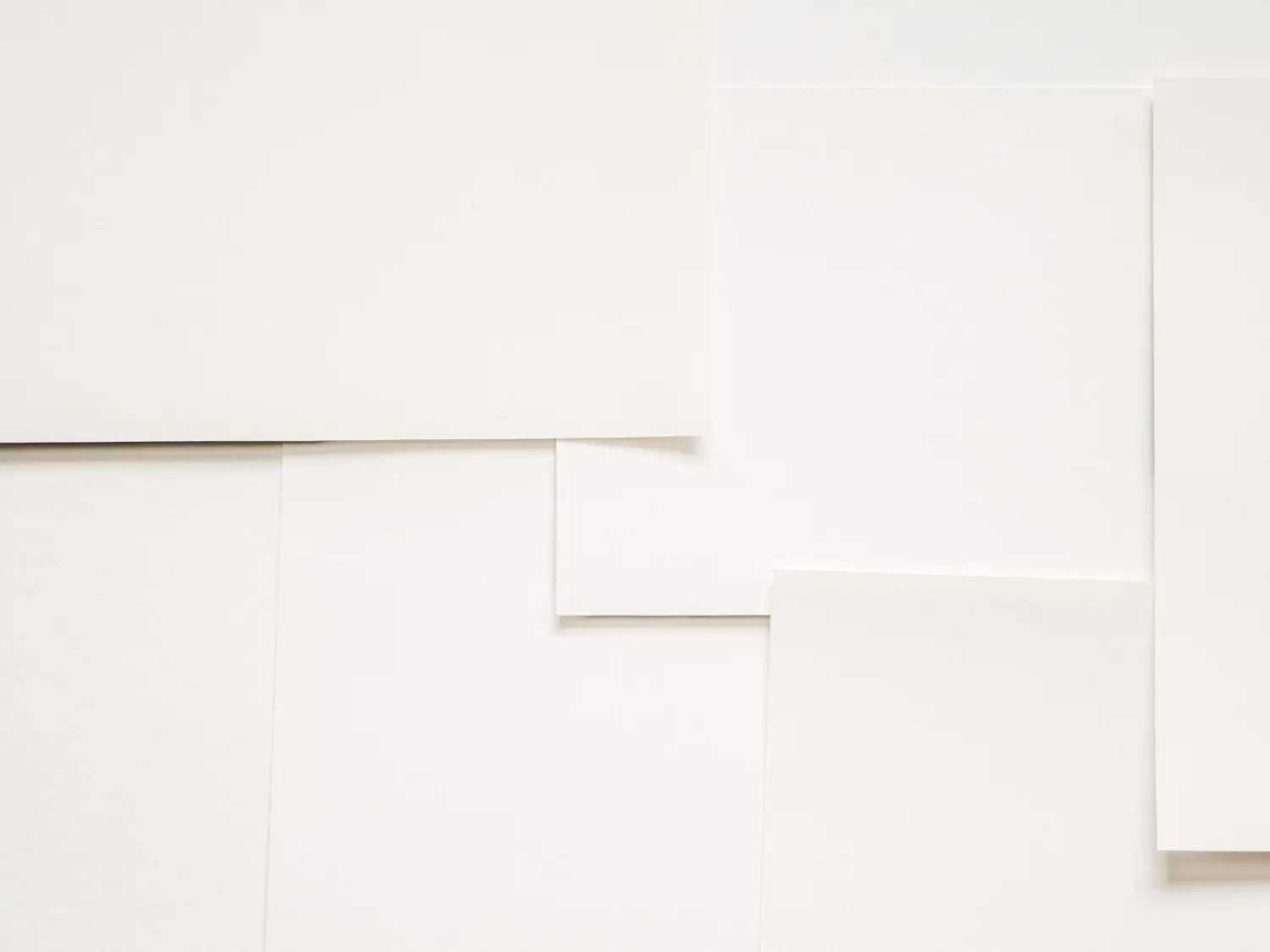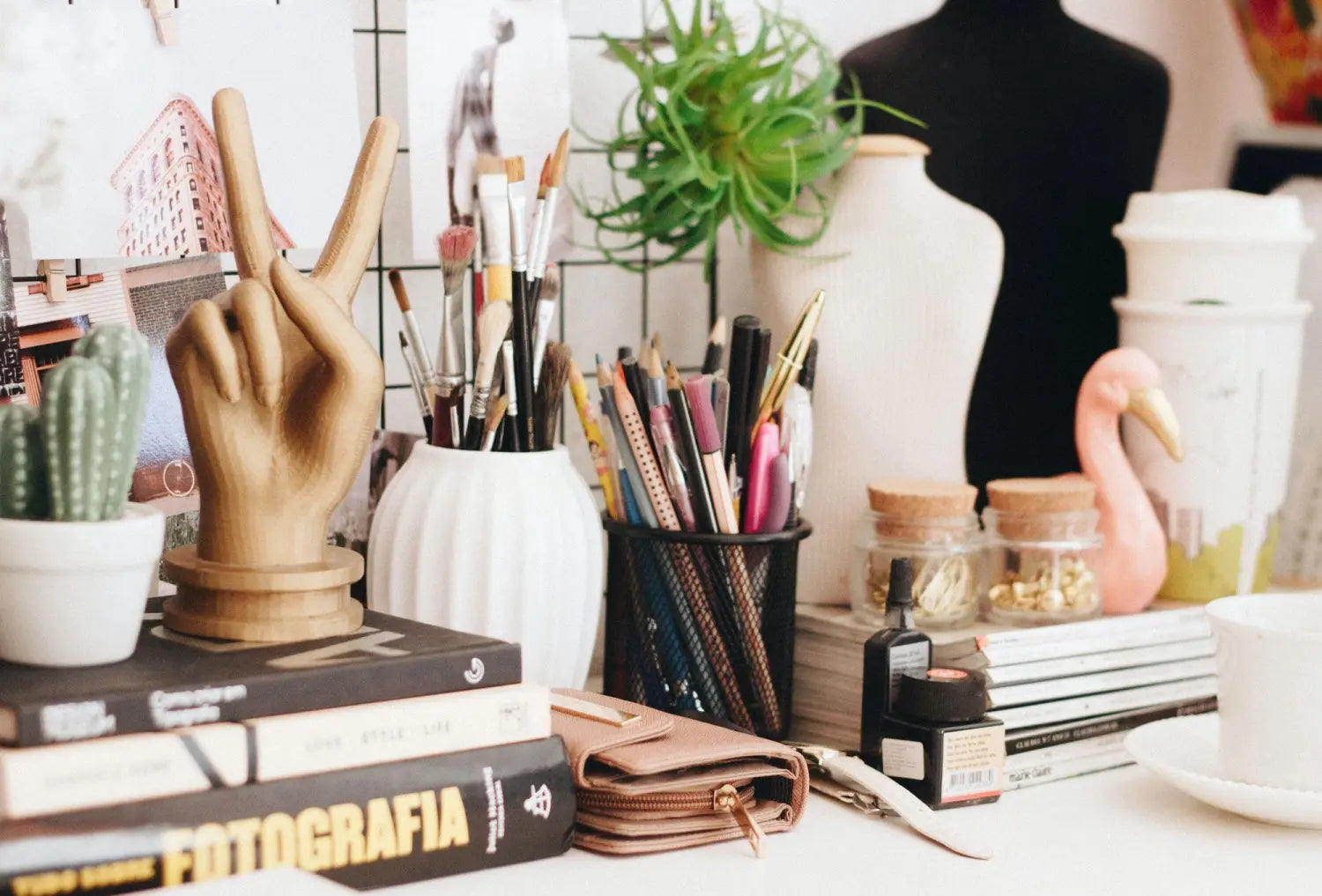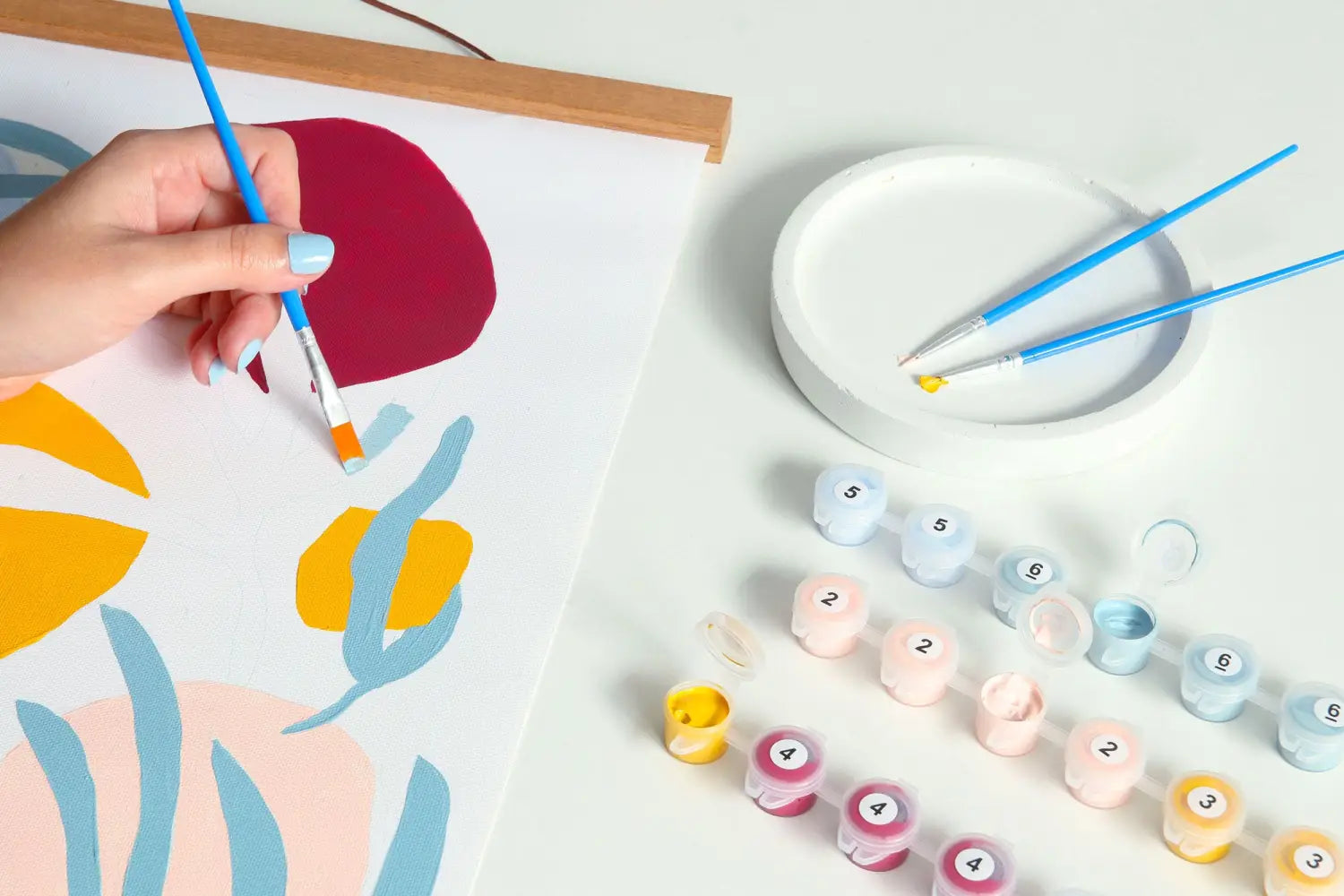[Our article contains affiliate links. If you purchase any of the mentioned products by clicking the links, we may earn a small commission. Note that we only recommend products we have tested and approve of.]
Choosing the right paper for prints or greeting cards is a dilemma many designer entrepreneurs face, and we are no exception. Since day one, printing our greeting cards has been an (almost) daily task: it is essential to strike the right balance between product quality and the profitability of the business or project.
This article therefore looks at the difficulties some of us face, using our own personal example based on several years of trial and error.
By popular demand, here is what we have been using since the beginning: The Canon PIXMA 100 printer as well as selections, depending on the project, between Mohawk, Lynx, and other papers for greeting cards. Like all our machines, we affectionately named it Billy.
We will present a comparison of different types of paper, tips for choosing the right paper without sacrificing quality or profits, and tricks to improve print quality and save money. Follow our guide to save your time, money, hair rather than pulling it out, and succeed in your stationery and printing business!

Here is my adorable cat lying on said printer!
Different types of paper for prints and greeting cards
The Canon PIXMA 100 and types of paper
The Canon PIXMA 100 printer is where it all started for us. A popular choice among designer entrepreneurs for their high-quality prints. However, it is common to encounter difficulties with certain types of paper, such as standard paper (cougar, lynx, neenah). Colors can sometimes look weird and completely off, which can be frustrating.
It is important to remember that each printer has its own specificities and that the type of paper used can greatly influence the final result. To achieve the best results with the Canon PIXMA 100, it is essential to experiment and find the paper that best suits your needs.

Mohawk, Lynx, or Enviro 100 for greeting cards
When it comes to creating greeting cards, the choice of paper is crucial in determining print quality, cost, and impact on profits. Among the popular options are Mohawk, Lynx, and Rolland's Enviro100.
Mohawk paper is known for its high weight and warmer white tone, which can give your greeting cards a more luxurious and distinctive look. However, Mohawk is also more expensive than Lynx, which can obviously affect the profitability of the product.
Lynx paper, on the other hand, is a less expensive option but may not stand out as much as Mohawk in terms of quality. To choose between these two options, it is essential to weigh the pros and cons and determine the importance of quality versus cost, or adjust the selling price accordingly.
Rolland's Enviro 100 paper is a high-quality, eco-friendly paper made from 100% recycled and FSC-certified wood fibers. This paper offers exceptional whiteness and a pleasant texture while having minimal environmental impact. It is slightly more expensive than the other two options. By choosing Rolland's "Enviro 100" paper, you can be sure to make a responsible choice for the environment while having a quality paper for your printing projects.

Alternative high-quality papers
If common papers don't suit you, don't worry! There are many other brands and types of high-quality paper for prints and greeting cards.
Epson (our favorite for posters): The Epson Premium Presentation Paper Matte is our big winner here at the Baltic Club. We really like it because it matches exactly what we want. Note that what is ideal for us is not necessarily ideal for everyone, of course. Do your own tests on your side, but know that the combination of Pixma 100 and Epson Premium Presentation Paper Matte is not bad at all. Otherwise, Epson is well known for its printers, but they also offer a nice selection of quality papers. Their Signature Worthy range offers excellent quality papers for art prints and greeting cards, such as the Epson Cold Press Bright and the Epson Hot Press Natural.
Hahnemühle: This German brand is renowned for its high-quality art papers and also offers a range of papers for digital printing. Try the Hahnemühle Photo Rag for a matte and soft texture or the Hahnemühle FineArt Baryta for a glossier finish.
Canson Infinity: Canson is a French brand that offers a wide range of papers for art prints and greeting cards. Their Canson Infinity range includes papers specifically designed for digital printing, such as the Canson Infinity Aquarelle Rag and the Canson Infinity Edition Etching Rag.

Some tips for exploring other options
We don't know everything, far from it. Your best friend? Your printer! Explain to them exactly what you want and there is a strong chance they will help you achieve your dreams. Research online to discover lesser-known brands and types of paper, but of equivalent quality.
Ask for advice from other designer entrepreneurs in the same graphic and technical universe as you to find out their recommendations. Don't hesitate to request paper samples from suppliers so you can test them yourself before making a decision.
In the end, the choice of the perfect paper for your prints and greeting cards will depend on your specific needs and your budget. Take the time to explore different options and test them to find the one that best suits you and allows you to create quality products while maximizing your profits: Make an Excel spreadsheet! It will serve you for a long time (we still use it to this day) and update it at least once a year.
Tips for choosing the right paper without sacrificing quality or profits
Finding the balance between quality and cost
The choice of the ideal paper for your prints and greeting cards should take into account both quality and cost. To find this balance, look for paper that offers good print quality at a reasonable price. This will allow you to offer attractive products to your customers while maximizing your profits. We can't emphasize it enough: Compare prices from different suppliers and don't forget to take into account shipping costs to determine the best value for money.
Negotiating prices with suppliers
Once you have found the paper that suits you, discuss with your suppliers to obtain discounts on higher quality papers or bulk purchasing options. Suppliers are often willing to offer more advantageous prices for large orders or regular customers. Don't hesitate to share your concerns about cost and profitability with your suppliers. They might suggest less expensive alternatives or help you find solutions to reduce costs without sacrificing the quality of your products. Don't be afraid, they are more open to talking about it than you might think.

Tips for improving print quality and saving money
Photoshop or equivalent settings and color matching
To achieve optimal printing results, it is important to check the color management and printing settings in Photoshop or any other image editing software you use. Make sure the settings match those of your printer and paper. Use color matching techniques, such as adjusting levels, curves, or hues, to adjust the colors of your images and achieve a rendering that meets your expectations when printing.

Here are my favorite settings in Photoshop. Take the time to search and test yours.
ICC Profiles
ICC profiles (International Color Consortium) are files that help optimize print quality by ensuring accurate color management between your printer and your paper. Download and use the appropriate ICC profile for your paper and printer to achieve consistent and high-quality printing results. You can usually find these profiles on the paper or printer manufacturer's website, and installation instructions are often provided.
Recycled, eco-friendly, and special texture papers
Consider alternative paper options to add value to your prints and greeting cards without spending a fortune. Recycled or eco-friendly papers are not only more environmentally friendly, but they can also give a unique and authentic look to your products. Additionally, papers with special textures or finishes, such as watercolor paper, kraft paper, or laid paper, can add a touch of originality and sophistication to your greeting cards and other prints.

Frequently asked questions about card printing
What paper should I use for printing cards?
Cardstock, matte photo paper, watercolor paper, textured paper, or fine art paper, depending on the desired appearance and quality.
What weight should I use for a greeting card?
Between 200 and 350 g/m² for a sturdy and high-quality greeting card.
Which printer is the most ink-efficient?
Ink tank printers, such as Epson EcoTank or Canon MegaTank models, are generally more ink-efficient.
What is the most commonly used paper?
Uncoated (non-glossy) paper, offset paper, and cardstock are among the most commonly used papers for printing by artisans. Large companies often choose one-sided coated (glossy on one side) paper.
What is the best format for printing greeting cards?
The best format for printing greeting cards depends on your preferences and the intended use of the card. However, the most commonly used formats for greeting cards are:
- A2 size (4.25" x 5.5" - 11 cm x 13 cm): This is the format we use. It is widely used in independent shops. It aims to be a little more refined than the others, in my opinion. This format is ideal for standard-sized greeting cards, offering enough space to include an attractive design and a personalized message inside.
- Square format (5" x 5" - 14 x 14 cm): Square cards are also popular for greeting cards because they offer a different and original look while being easy to fold and ship.
- A5 size (5.8" x 8.2" - 14.8 x 21 cm): If you want to create a larger greeting card with more space for an elaborate design or a longer message, the A5 format may be a good choice. This is generally what you find in pharmacies!
Consider the available envelope sizes if you want to offer envelopes with your cards!

Conclusion
In summary, choosing the right paper for your prints and greeting cards is crucial to ensuring the quality of your products while maintaining the profitability of your business. It's important to carefully evaluate the available options and find a balance between quality and cost. Don't hesitate to test different types of paper and negotiate with your suppliers to get the best possible terms. Finally, consider exploring alternative, eco-friendly, or special texture and finish paper options to stand out and offer unique products without sacrificing your profits.
If there's only one thing to remember: Your success will depend on your ability to offer quality products while controlling your costs and maximizing your profits. Many people we see do not pay attention to their costs, as crazy as that may sound. Don't waste time and immediately seek to make your project financially sustainable.


